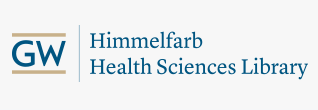
School of Medicine and Health Sciences Poster Presentations
Perinatal Outcomes After Implementing a Hemorrhage Risk Assessment At Admission
Document Type
Poster
Abstract Category
Women/Child Health
Keywords
maternal health, quality improvement, risk assessment
Publication Date
Spring 5-1-2019
Abstract
Our objective was to evaluate the impact of a novel assessment of hemorrhage risk at admission on subsequent perinatal outcomes. This project was a retrospective cohort analysis of a multicenter database included women admitted to labor and delivery from January 2015 to June 2018. A novel nursing assessment developed by Association of Women's Health, Obstetric and Neonatal Nurses was used to categorize patients as low, medium or high risk for hemorrhage. This was implemented 6/1/2016 across the centers. Perinatal outcomes related to blood transfusion, estimated blood loss (EBL) ‚â• 1000cc, ICU admission, chorioamnionitis, general anesthesia, oxytocin use and cesarean delivery were evaluated before and after implementation. There were a total of 109,719 women included, with 38,751 women included prior to implementation of the hemorrhage risk assessment and 70,968 women after implementation. Rates of any blood transfusion (0.5 to 0.4%, p=0.02) and EBL ‚â• 1000cc (6.3 to 6.0%, p=0.02) were significantly lower after implementation. Incidence of ICU admission, chorioamnionitis and general anesthesia did not change overall in the time period studied. There were higher rates of oxytocin use (83.4 to 85.2%, p<0.0001) and spontaneous vaginal delivery (58.8 to 59.9%, p=0.01). Details on perinatal outcomes are included (Table). In conclusion, after implementation of a hemorrhage risk assessment at admission, we found a 20% reduction in rates of blood transfusion and EBL ‚â• 1000cc. Significantly increased oxytocin use was also observed. Further analysis must be done to assess if any other changes could account for these trends.
Open Access
1
Perinatal Outcomes After Implementing a Hemorrhage Risk Assessment At Admission
Our objective was to evaluate the impact of a novel assessment of hemorrhage risk at admission on subsequent perinatal outcomes. This project was a retrospective cohort analysis of a multicenter database included women admitted to labor and delivery from January 2015 to June 2018. A novel nursing assessment developed by Association of Women's Health, Obstetric and Neonatal Nurses was used to categorize patients as low, medium or high risk for hemorrhage. This was implemented 6/1/2016 across the centers. Perinatal outcomes related to blood transfusion, estimated blood loss (EBL) ‚â• 1000cc, ICU admission, chorioamnionitis, general anesthesia, oxytocin use and cesarean delivery were evaluated before and after implementation. There were a total of 109,719 women included, with 38,751 women included prior to implementation of the hemorrhage risk assessment and 70,968 women after implementation. Rates of any blood transfusion (0.5 to 0.4%, p=0.02) and EBL ‚â• 1000cc (6.3 to 6.0%, p=0.02) were significantly lower after implementation. Incidence of ICU admission, chorioamnionitis and general anesthesia did not change overall in the time period studied. There were higher rates of oxytocin use (83.4 to 85.2%, p<0.0001) and spontaneous vaginal delivery (58.8 to 59.9%, p=0.01). Details on perinatal outcomes are included (Table). In conclusion, after implementation of a hemorrhage risk assessment at admission, we found a 20% reduction in rates of blood transfusion and EBL ‚â• 1000cc. Significantly increased oxytocin use was also observed. Further analysis must be done to assess if any other changes could account for these trends.


Comments
Presented at Research Days 2019.